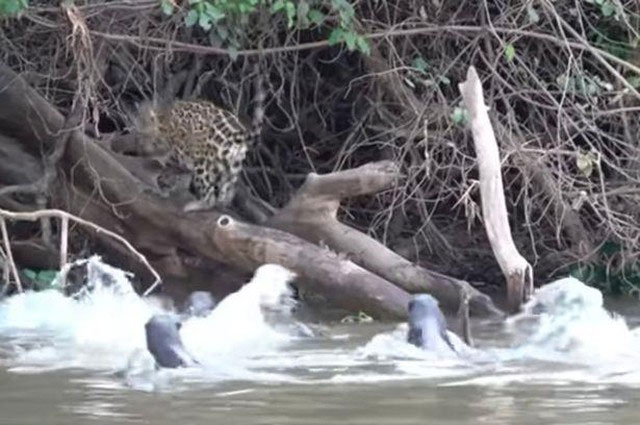Just for the Love of Food, the Fearsome Predator of Nature Almost Paid a Heavy Price.
The Pantanal is one of the largest wetlands on the planet, covering an area of 230,000 km2 across the territories of Brazil, Bolivia, and Paraguay. The name Pantanal comes from the Portuguese word “pântano”, meaning swamp, but in reality, this area is a vast alluvial plain that includes rivers, lakes, grasslands, forests, and savannas.
The Terrain of Pantanal is incredibly unique, not only due to the natural features and climate of the region but also largely because of the diversity of its flora and fauna. The Pantanal is home to approximately 3,500 plant species, 650 bird species, 80 mammal species, and 50 reptile species, with around 20 million caimans alone. This area contains many specially protected natural regions and a nature reserve of the same name. It is known that the Pantanal is a UNESCO World Heritage site.
The Pantanal wetland is situated in a low-lying area, surrounded by higher ground: to the east lies the Serra de Maracaju mountain range, to the south is the Serra da Bodoquena, the Chaco region of Paraguay and Bolivia blocks the west, and the Serra dos Parecis and São Geronimo mountain ranges are to the north.
In the world’s largest wetland, the dominant animal along the waterways is the Giant River Otter (Pteronura brasiliensis). They are the oldest members of the weasel family and are among the most successful social animals to date.
When fully grown, a giant river otter can reach nearly 1.8 meters in length and weigh up to 35 kg, which is double the size of the common river otter found in North America.
In the rivers, there are otters, while on land, the jaguar reigns supreme, a predator with extremely formidable hunting skills.
Wildlife photographer Daniel De Granville, while on a trip to the Pantanal, was fortunate enough to witness a “once in a lifetime” encounter between two species that dominate the different banks of this region.
On that day, during a journey drifting along a river in the Pantanal, the photographer came across a strange sight. An adult jaguar, for reasons unknown, had drifted to the riverbank to hunt. The predator crept along a piece of rotting wood towards the riverbank, hoping to find an easy meal. Unfortunately for it, this time it faced an opponent that was not easily intimidated.
De Granville recounts: “Right below where the jaguar was hunting was the home of a group of otters. Perhaps the clever jaguar was looking for a small, lost otter to feast on.”
The predator’s scheme quickly fell apart against the united strength of the otter group.

The jaguar panic-stricken fleeing from the fierce resistance of the otter group.
A group of adult otters gathered together to actively attack the intruder. The aggressive and fearless attitude of the otter group frightened the jaguar so much that it fled with its tail between its legs, no longer daring to approach the area.


















































